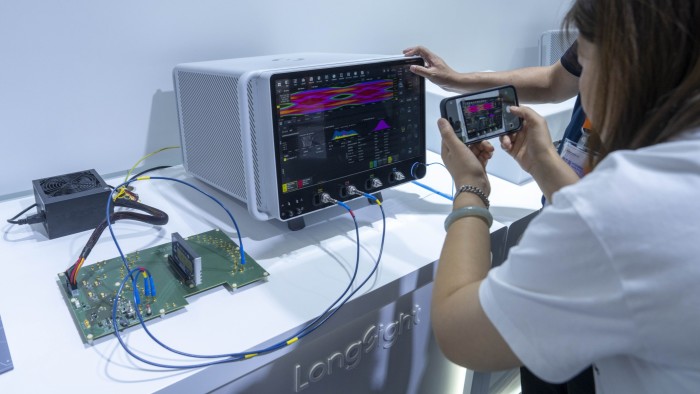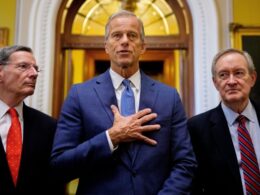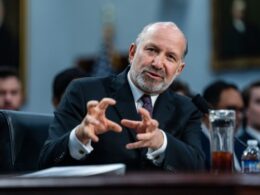Unlock the White House Watch newsletter for free
Your guide to what Trump’s second term means for Washington, business and the world
China’s Communist party leadership has called for a nationwide mobilisation involving “extraordinary measures” to achieve “decisive breakthroughs” in semiconductors and other key technologies.
The push by the party’s elite central committee to close the gap with the west in chips, machine tools, high-end instruments and basic software comes just days ahead of critical meeting between Chinese leader Xi Jinping and US President Donald Trump.
China and the US have increasingly used technology controls and access to vital materials as weapons in their trade confrontation and Trump and Xi are expected to discuss Beijing’s export controls on rare earths when they meet in person on Thursday in South Korea.
The call for extraordinary measures was included in a party document released on Tuesday that expanded on the conclusions of a central committee meeting last week to set out priorities for China’s 2026-2030 five-year plan for economic and social development.
The document did not give details of the kind of measures envisaged, but in a speech also released on Tuesday, Xi highlighted the need to promote original innovation.
“The most important factor in promoting high-quality development is to accelerate high-level scientific and technological self-reliance,” Xi said in the speech, which was released by state news agency Xinhua.
Xi’s industrial policies aimed at self-reliance in all spheres of manufacturing, science and technology are widely blamed for helping to spark the trade war, with partners in advanced economies accusing China of mercantilism.
The goals and priorities set out by party leaders will be used by China’s cabinet — the state council — as the basis for drafting the official five-year plan, which is expected to be approved in March next year.
In his speech explaining the policy goals, Xi said China must take action to “vigorously boost consumption” to bolster the economy and make household spending a more powerful engine of growth amid international uncertainties.
“As the global environment becomes more challenging, China must accelerate efforts to build a new development model and keep a firm grip on its own growth trajectory,” Xi said.
Economists in Beijing and government advisers have been calling for greater efforts to rebalance the economy from an emphasis on supply-side investment to household consumption, which is suffering from a prolonged property slowdown.
“There has always been this conflict,” said one government adviser of Beijing’s preference for investment in advanced technology and infrastructure over measures to directly expand social welfare and household consumption.
In an apparent response to the rebalancing calls, the new five-year plan proposals call for greater investment in people including subsidies to encourage child birth, an extension of free education, strengthening pensions and insurance and boosting rural incomes.
China must “combine improving people’s livelihoods and boosting consumption by closely integrating investment in things with investment in people”, Xi said.
He said the proposals would help the country grasp the goal of “common prosperity”. But economists say action previously proposed has fallen far short of sufficient to bring about a broad economic rebalancing.
The party document called for economic growth to remain within a “reasonable range”, with China aiming to reach the level of moderately developed countries in per capita GDP by 2035.
Xi has previously called for GDP to double between 2020 and 2035, which economists believe implies an annual growth rate of between 4.7 per cent and 4.8 per cent.
The document also called for artificial intelligence to be deployed across industries over the next five years. It identified new priority sectors for state support including quantum technology, drones, biomanufacturing, hydrogen and fusion energy, brain-computer interfaces, humanoid AI robots and 6G mobile communications.
The latest proposals come just a day after US officials said they expected China to delay introducing export controls on rare earths, following two days of talks in Malaysia that raised hopes that Trump and Xi would agree to extend a trade truce at their high-stakes summit this week.
Analysts have said Beijing aims to use the next five-year plan to both strengthen its existing manufacturing dominance and to address remaining vulnerabilities where it is still reliant on foreign technology.
These motivations have become increasingly acute after Trump’s sweeping “liberation day” tariffs in April restarted the trade war between the world’s two biggest economies.
Additional contributions by Tina Hu in Beijing
Source link









